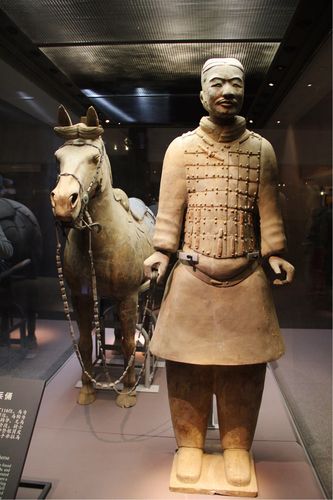
Who Were the Terracotta Army Cavalrymen?
A History of Cavalry
Historically, cavalry (from the French word cavalerie, itself derived from "cheval" meaning "horse") are soldiers or warriors who fight mounted on horseback. The use of horses in warfare dates back millennia, with evidence suggesting horseback riding for military purposes emerged around the 9th century BCE. Cavalry offered significant advantages on the battlefield, including speed, maneuverability, and a psychological impact on the enemy. Different cultures developed unique cavalry traditions, from the heavily armored knights of medieval Europe to the swift horse archers of the Eurasian steppes.
The Terracotta Army: A Silent Guardian
The Terracotta Army is a collection of thousands of life-sized terracotta sculptures depicting the armies of Qin Shi Huang, the first emperor of China. Discovered in 1974 by farmers near Xi'an, this UNESCO World Heritage site provides an unparalleled glimpse into the military might and artistry of ancient China. The figures are incredibly detailed, each with unique facial features, hairstyles, and armor, reflecting the different ranks and roles within the Qin army.
The Significance of Cavalry in the Qin Army
The Qin dynasty (221-206 BCE) saw the rise of cavalry as a crucial component of Chinese warfare. Prior to this period, chariots played a dominant role, but the Qin, with their focus on expansion and consolidation, recognized the tactical advantages of mounted warriors. Cavalry provided speed and agility, allowing them to outmaneuver enemies, conduct raids, and pursue fleeing opponents. The presence of cavalry within the Terracotta Army underscores their importance in securing and maintaining the Qin Empire.
Characteristics of the Terracotta Cavalrymen
The cavalrymen of the Terracotta Army are easily distinguished by their mounts and their positioning. They are typically found in smaller pits than the infantry, reflecting their more specialized role. While the infantry stands in vast formations, the cavalrymen are arranged in smaller units, ready for rapid deployment.
Here's a closer look at their defining features:
- Horses: The terracotta horses are depicted with remarkable realism, capturing their powerful builds, flowing manes, and even the tension in their muscles. These were not the small, stocky horses native to China at the time, but larger, more robust breeds likely acquired through trade or conquest, highlighting the empire's reach and resources.
- Riders: The cavalrymen are typically dressed in lighter armor than their infantry counterparts, allowing for greater mobility on horseback. They are armed with swords, crossbows, and lances, showcasing the diverse tactical options available to the Qin cavalry. Some riders are depicted in the act of drawing their bows, frozen in time for over two millennia.
The Cavalry's Role in the Afterlife
The Terracotta Army was not merely a display of military might; it was intended to serve the emperor in the afterlife. Just as the cavalry protected and projected the emperor's power in life, they were to continue this duty in the next world. Their presence underscores the belief that the emperor would continue to rule, needing armies to command and guard his eternal realm.
FAQs
Q1: How many cavalry horses are in the Terracotta Army?
A1: While the exact number is unknown, there are estimated to be over 150 terracotta horses and riders unearthed from the pits so far.
Q2: Did the cavalrymen fight alongside the chariots, or did they replace them?
A2: The Qin transition to cavalry was gradual. While they recognized the advantages of mounted warriors, chariots continued to be used, albeit in a diminished capacity, likely for command and control or ceremonial purposes.
Q3: What does the inclusion of cavalry in the Terracotta Army tell us about the Qin dynasty?
A3: It highlights the Qin's military innovation, their focus on speed and mobility in warfare, and their access to resources and trade networks that allowed them to acquire superior horses, vital for building an effective cavalry force.